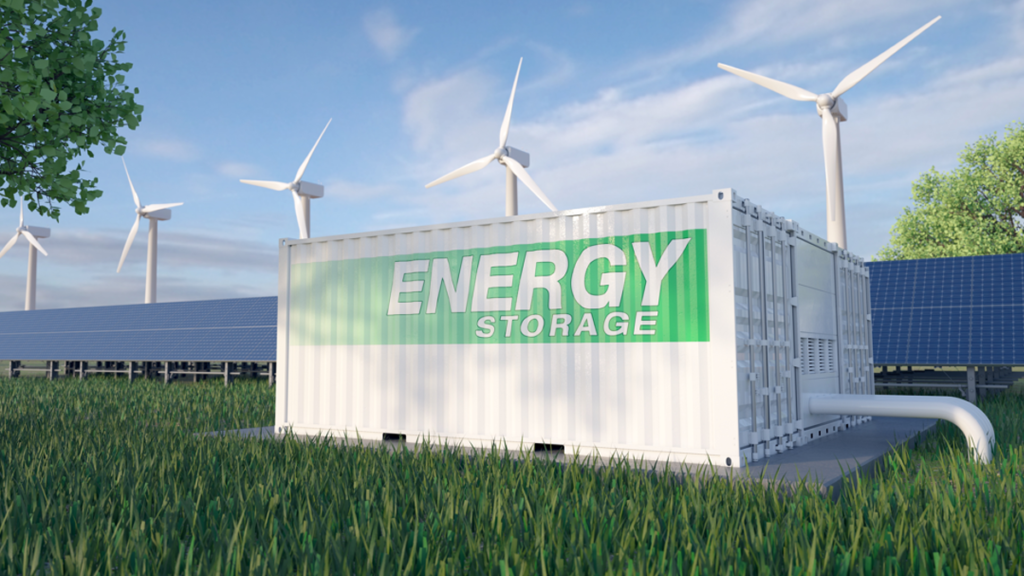Following the UK’s increased investments in power technologies, Sam Holland looks at battery energy storage systems (BESS) and their significance in the current – and uncertain – energy landscape.
Introducing BESS
BESS, or battery energy storage systems, embody the use of Lithium-ion technologies (although many other electrochemical solutions can be used) to absorb and maintain electrical power, often that which is gathered by renewable energy generators such as solar and wind power systems. Especially at this time of uncertainty in fuel distribution and other areas of energy provision, BESS are crucial because they gather and maintain energy for times when the grid’s power output may be limited – or even non-existent if natural disasters or other emergencies occur.
Of course, such times of energy shortages are not specific to traditional grid systems: renewable energy is also problematic because there is no guarantee that systems such as solar panel arrays and wind turbines will always be able to maintain electrical power due to their being weather-dependent. It is therefore important that much of the electrical power that is generated by these renewable (and therefore sometimes precarious) systems is used to charge BESS for times when energy supplies are problematic. This combination of renewable energy generators and battery energy storage systems forms a technology known as a HRES (hybrid renewable energy system).
While, to many, the value of BESS may be as obvious as the value of using external batteries to charge our very consumer devices, what may be less clear are the answers to these questions:
- Where do these BESS tend to be located?
- Who tends to own and operate these BESS?
- How will the increasing demand for these BESS be acted on by government policies and other interested parties?
These three bullet-points are explored throughout the rest of this article.
Where, who, and how?
The typical locations of BESS may seem obvious when you consider that many people don’t tend to encounter them in everyday life: battery energy storage systems tend to be installed in rural areas due to both their large scale and their need to be located in areas that are remote – and therefore safely distant from large crowds. In fact, the UK Government recently relaxed its limitations on how large rural landowners’ energy installations can be: as will be covered shortly, the result has been that farmers have begun to offer their land as the grounds for battery energy storage systems.
Nevertheless, BESS, given their said potential to complement the efficiency of nationwide grid systems, are the product of modern manufacturing; and as such, they are often not the property of the landowners who accommodate them: they are the projects of major manufacturers (not the landowners themselves) and the financial interests of government bodies.
For instance, what will one day be the largest BESS in Europe has been announced by Sembcorp Energy UK and will be developed at Wilton International, an industrial site in Teesside (an area in North England). Sembcorp’s plans have been lauded by Greg Hands, the UK Government’s Minister of State for Business, Energy and Clean Growth of the United Kingdom. “Flexible energy storage,” said Hands, “will be key to ensuring we get the full benefit from our world-class renewables. This project will help put Teesside at the heart of the [UK’s] energy transition.”
The news is indeed a complement to the government’s plans for net-zero energy systems, but the above question of ‘how’ remains: ‘How will the increasing demand for these BESS be best acted on by government policies and other interested parties?’ Consider the UK Government’s aforementioned relaxation on what were once stricter size limitations on energy storage systems. More specifically, the government’s plans to remove its original energy storage limitations (namely 50 megawatts in England and 350 megawatts in Wales) were announced in mid-2020. The result has been that farmers and other landowners are entering into power purchase agreements with manufacturers, meaning that the former’s acres can be used rather like industrial sites for electrical power storage.
The storage, supply – and control – of energy with BESS
On top of their said energy storage potential, it is important to note that battery energy storage systems do not just exist to maintain backup power from renewable energy sources. This prospective mass deployment of BESS, which the government predicts will see the arrival of 100 new large-scale batteries, will have another core purpose: load management.
Load management is the process by which the power demands of electricity users throughout the grid can be controlled during peak times (which is why such an approach to load management is called ‘peak shaving’). In the context of BESS, such a peak shaving operation sees the given energy storage systems offering electrical power at times when users’ energy demands would be too high for the grid to handle unaided.
Currently, the UK is enduring a time of uncertainty in energy, which has been compounded by the challenges that come with the ebb and flow of weather-dependent renewable energy sources. Accordingly, such an increased interest in BESS will be vital to both the storage, supply, and – perhaps most importantly of all – control of electrical energy throughout various UK grids.
There’s more content on energy, power, and much more at our Smart Cities page.
Plus, IoT Insider’s sister publication Electronic Specifier has more at its Renewables and Eco Innovation pages. Also feel free to comment below or delve deeper at our LinkedIn page.
